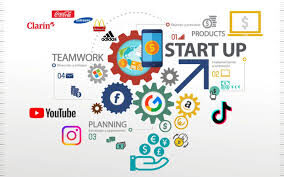🌍 1. Overview
The global food industry in 2025 is a multi-trillion-dollar sector, employing over 1 in 10 people worldwide. It includes everything from agriculture and processing to packaging, logistics, retail, and food service.
Despite its growth, it’s under pressure from climate change, inflation, supply chain disruptions, and changing consumer habits.
💰 2. Economic Situation
- The global food market is worth around $9–10 trillion USD and continues to grow slowly (~3–4% annually).
- Food prices remain volatile due to energy costs, conflicts (like in Ukraine and the Middle East), and weather extremes.
- Developing countries face higher food insecurity, while developed markets are focusing on sustainability and innovation.
- E-commerce food sales (online groceries, delivery apps) have surged since the COVID-19 pandemic and remain strong.
🌱 3. Sustainability and Environmental Pressures
- The food industry contributes roughly 25–30% of global greenhouse gas emissions.
- Major brands are pledging to reach net-zero emissions and reduce plastic packaging.
- Deforestation, water scarcity, and soil degradation remain critical global challenges.
- Consumers are more aware of sustainable and ethical sourcing, pushing companies to adopt eco-friendly practices.
🧬 4. Technology and Innovation
- AI and automation are transforming everything from precision farming to food delivery logistics.
- Plant-based foods and lab-grown meat continue to expand, though adoption is slower than predicted due to cost and regulation.
- Food traceability via blockchain and QR codes is improving transparency.
- 3D food printing, vertical farming, and alternative proteins (insects, algae, fermentation-based) are gaining attention.
🍎 5. Consumer Trends
- Demand for healthier, natural, and minimally processed foods is rising.
- Functional foods (with added nutrients or probiotics) are popular, especially in urban markets.
- Convenience still drives purchasing — ready-to-eat and delivery options dominate.
- Flexitarian diets (mostly plant-based but not fully vegan) are increasingly mainstream.
- Ethical eating (fair trade, cruelty-free, low carbon) influences brand loyalty.
⚠️ 6. Current Challenges
| Challenge | Description |
|---|---|
| Climate change | Droughts, floods, and heatwaves disrupting crops. |
| Food security | Over 700 million people face hunger globally. |
| Supply chain instability | Conflicts, pandemics, and transport costs raise prices. |
| Labor shortages | Aging agricultural workforce and low wages. |
| Inflation | Rising prices affecting both producers and consumers. |
| Food waste | About one-third of food produced globally is wasted. |
🔮 7. Outlook
- The industry is shifting toward resilience, technology adoption, and sustainability.
- Growth is expected in Asia and Africa, while Europe and North America focus on sustainable and tech-driven production.
- Governments and companies are investing in climate-smart agriculture and alternative proteins to meet future food demand.
🧾 Summary Table
| Aspect | Current Situation (2025) |
|---|---|
| Economy | Steady growth, but high costs and volatility |
| Sustainability | Urgent shift toward eco-friendly production |
| Technology | Rapid digital and biotech adoption |
| Consumers | Health- and ethics-focused choices |
| Challenges | Climate, food security, inflation, waste |
Search
Study
